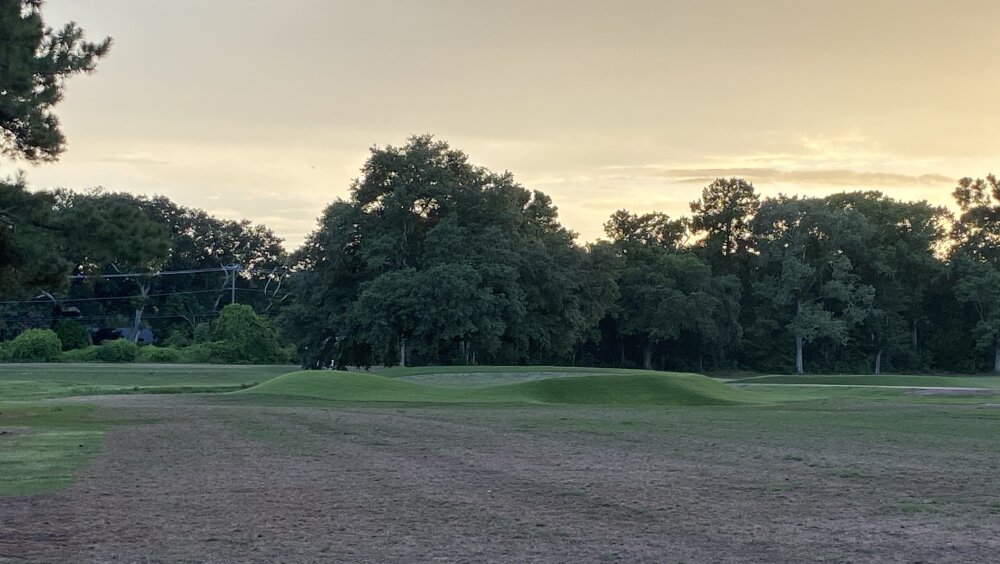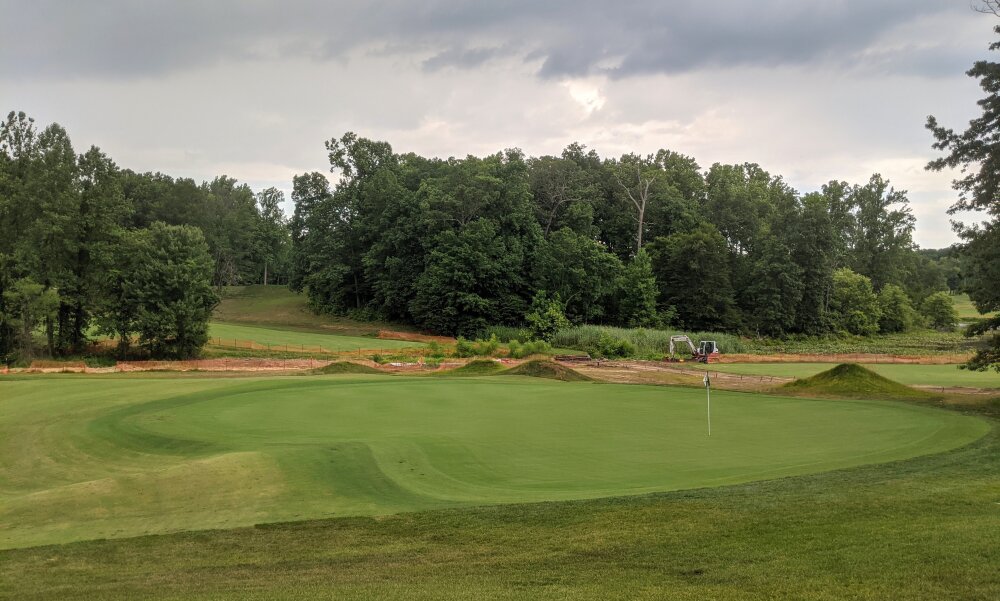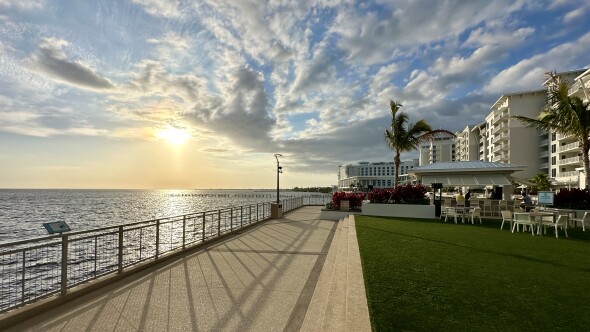"Let the people play."
That has been the rallying cry to municipal golf for decades. It may have faded a bit in the latter stages of the 20th century, but it has been echoing loud and clear across the country in recent years. To be sure, some municipalities have decided - right or wrong - that golf need not be in their purview or on their annual budget sheets, and several municipal facilities have joined the steady 200 or so annual course closures the industry has seen over the last decade or so. But other towns, cities, counties and states have continued to maintain their interest in providing affordable golf as a local amenity while still others have made fresh investments in their golf facilities, often combining public and private funding in order to forge a sustainable future while considering the taxpayer.
Since last year's update on what I'm calling America's golf "Munaissance," several other low-cost local courses have received the kind of TLC that turned courses like Hartford Conn.'s Keney Park and Hobbs, N.M.'s Rockwind Community Links from eyesores to eye-opening successes, treating area golfers to the type of quality of architecture that has long been reserved for expensive private clubs.
Even though a global health crisis and prolonged pandemic is disrupting life in America, golf has never been more popular, thanks to some major ways COVID-19 has altered daily life. Though some projects have been delayed, several municipal golf courses have continued to improve during this strange time and the months preceding.
Here is a sampling of notable municipal golf course renovation efforts across America.
Washington, D.C.: The National Links Trust partners with the National Parks Service
Experienced shaper-turned-independent golf course architect Mike McCartin loves East Potomac Park Golf Course so much that he wrote his thesis about it for his Masters in Landscape Architecture from the University of Georgia. Normally, these lengthy documents are dry and see little use beyond their initial presentation, but academic research will be turning to real-world work when the National Links Trust, which McCartin founded with fellow architect and Outpost Club president Will Smith, begins overseeing it, as well as Rock Creek Golf Course and Langston Golf Course, two other golf facilities owned by the National Park Service.
With a passionate group of backers, the National Links Trust seeks to invest in D.C.'s three historic golf courses, and it has some serious talent on board to help both restore and elevate them back to (and possibly beyond) their former glory. Tom Doak is attached to the effort to restore East Potomac Park, which originally included a reversible 18-hole course laid out in the early 20th century by Walter Travis. Rock Creek, designed by William Flynn, is set to be improved by Gil Hanse, whose high-profile commissions include the Olympic Golf Course in Brazil and one of the two championship layouts at the PGA of America's new digs in Frisco, Texas. Finally, Beau Welling, who heads up Tiger Woods' design group, will assist with Langston, which sports nearly century-long ties to America's Black golfing history.

Charleston, S.C.: A beloved course gets a long-overdue facelift
Add architect Troy Miller to the list of champions of quality municipal golf. The Charleston native's family history with the course lovingly called "Muni" goes back to the 1930s, and now he is putting the finishing touches on a comprehensive renovation that will breathe new life into a previously popular but tired public amenity. In operation since 1929, it has long been suspected that the course's original design included input from C.B. Macdonald protege and collaborator Seth Raynor, who built nearby private courses at Yeamans Hall and the Country Club of Charleston.
With that in mind, Miller's redesign of Muni borrows heavily from the Macdonald/Raynor tradition of applying template holes and features to the course's Lowcountry landscape.
"As an architect, having a chance to bring the MacDonald/Raynor style of architecture to the general public at a very reasonable price point is entirely unique," said Miller. "Given Raynor’s history in Charleston, there’s no better place to honor his legacy."
Like Yeamans Hall, the new Muni will start golfers off with a take on one of Raynor's most dynamic green templates: the Double Plateau. This bold putting surface will have two distinct shelves separated by a trough, testing most golfers' lag-putting abilities immediately.
Miller's work represents the first major update to the golf course in some 60 years, and when it reopens in the fall (mid- to late-October is the current target), it should give golfers an entirely upgraded golf experience in a familiar, beloved setting.

Florida: Concrete progress, big plans and some perplexing delays
The more I live here, the more I become convinced that Florida is America's strangest state. "Florida man..." is a reliable starting phrase to countless bizarre news headlines. I blame it on the summer heat and humidity, which causes crazy ideas to grow in people's heads as rapidly as, say, untended Bermuda grass.
Several municipal golf projects are in various states of progress in the Sunshine State, and they're all over the map, both geographically and in their stages of development, as well as occasional dysfunction.
I'm pleased that just 45 minutes south of where I live, Martin County's golf course renovation project is proceeding normally. The price tag of more than $5 million and a reduction of the county golf footprint by nine holes may seem steep, but there's a lot to like going on here, including an intriguing new nine-hole reversible golf course designed by accomplished Florida-based architect John Sanford.
"The reversible course is designed for family fun and introducing new players to the game," said Sanford. "The retro design includes simple landforms, plenty of short grass, easy [walkability] and the opportunity to use the ground for approach shots."
In addition to Sanford's new nine, Martin County is investing in a new clubhouse and souped-up driving range that includes features familiar to proponents of TopGolf, Drive Shack and other "golfertainment" venues. Shot-tracing technology, touchscreens, launch monitors and lit-up golf balls for use at night are all part of the plans for this element of the renovation.
A couple dozen miles south, an exciting public-private partnership for affordable local golf is in its infancy, but the plans are promising. The West Palm Beach Golf Course is on one of the best pieces of land for golf in the state, sandy and full of subtle elevation changes. But its golf course, originally laid out in the 1950s by Dick Wilson and then redesigned in the 2000s by Mark McCumber, has been growing over for two years after the city shut it down rather than continue to let it bleed money. A new movement is afoot to essentially build a new golf course on that property, designed by Gil Hanse and shepherded by PGA of America CEO Seth Waugh.
According to a Palm Beach Post article from March, Waugh has found an "unnamed major investor" and he and the PGA have about a year left in a 15-month window to secure full funding for the course, which the organization seeks to lease from the city. As the PGA relocates its headquarters to Frisco, Texas, this project would help it maintain strong ties to its longtime Florida home.
On the other side of Florida, hopes for a similarly dramatic revitalization of Bobby Jones Golf Club in Sarasota endure. The facility, home to 45 holes (two 18s and a 9-hole executive layout), has been closed since the beginning of the pandemic and is not expected to reopen until consulting architect Richard Mandell has completed his proposed renovation project, slated to begin in April 2021. That work was originally forecast to reduce the complex's number of holes by only nine, but the proposal the city approved in February is for a single new 18-hole course, plus a nine-hole short course on the land that the current executive layout now occupies. "The adjustable concept has multiple flat areas throughout the layout serving nine different greens complexes from different directions," says Mandell, "so on any given day the routing will be completely different."
Then there's the ongoing saga of Boca National Golf Club. This course has been planned for the better part of three years, ever since the city agreed in principle to sell the land that currently houses the 28-year-old Boca Raton Municipal Golf Course to a home developer for $65 million, and subsequently buy the land where the defunct Boca Teeca golf course used to sit for $24 million in order to build a brand-new course for locals. Concerns over course construction estimates - initially more than $28 million by the selected design group of Nick Price and Tommy Fazio - caused an uproar among locals. More recent estimates foresee the course - 18 holes, a 9-hole short course and a range and learning center - costing closer to $15 million. But the pandemic has caused the local park district to drag its feet in firming up plans, so this once-promising facility's future remains in limbo.

Other outposts of the Munaissance
Denver
Out west, the end of this month will see the christening of Denver's refreshed City Park Golf Course, with the Denver City Amateur Championship taking place on August 29 and 30 and serving as the course's debut, followed by limited public play through the fall. Architect Todd Schoeder's course renovation work includes a new four-hole loop that will be used by the First Tee of Denver, and a brand-new, contemporary-styled clubhouse is expected to draw non-golfers and golfers alike, with floor-to-ceiling windows affording long-range views of the downtown skyline and Rocky Mountains beyond.
Annapolis
Andrew Green is one of golf's hottest architects. Even though he has no entirely original designs to his individual credit, he has made a splash in the industry via several high-profile renovation and restoration projects. At Inverness Club in Ohio, he undid one of the more perplexing modern renovations and set the Donald Ross design back on a course toward future major championships. He just finished a similar project at Oak Hill Country Club's famed East Course in Rochester, N.Y., and his ongoing work at Congressional Country Club's Blue Course seems destined to position that club for its own upcoming slew of championships, including the 2031 PGA and the 2036 Ryder Cup. But in Annapolis, Md., he has been refining the Anne Arundel County-owned Eisenhower Golf Club with a mix of classic shaping (including some hairy, conical mounds) and a trendy no-bunkers approach, which will help the county cut down on maintenance costs. It's not as flashy as the likes of Congressional or Inverness, but Eisenhower will open more golfers' eyes to sophisticated architecture on a daily basis when it reopens this fall.
Richmond
Davis Love III's design group is busy, having recently reopened the substantially redone Birdwood Golf Course, home to the University of Virginia's golf teams. Now their attention is turned 70 miles southeast, where Belmont Golf Course is looking toward the future by going smaller, reducing its original A.W. Tillinghast course (host to the 1949 PGA Championship) to 12 regulation holes but adding a six-hole short course and a 35,000-square-foot putting course. The $5 million project is a public-private partnership between Henrico County and the First Tee of Greater Richmond, which is contributing most of the funds and will be operating the facility on a long-term lease.

















Garbage - just roll out to the local cow pasture muni, light up a fatty, load the cooler full of beer on the cart, and turn up the country music and play
The Boca Raton Beach and Park District paid $24 Million for property worth $5 Million. The appraiser valued the property based on residential development but the property is subject to a restrictive covenant saying the 208 acres can only be operated as a "Golf Course Facility."" Based on that usage the property should be valued at no more than $5 Million. No wonder they are back to square one. You should investigate this issue and "follow the money."